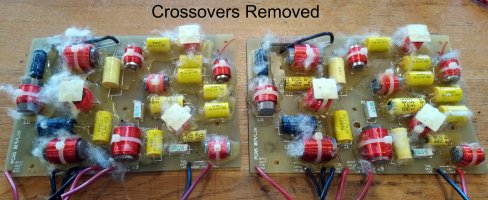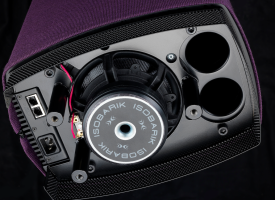I'm thoroughly enjoying the isobarik design of my Keltiks. The depth of bass makes me smile out loud.
What I'm trying to find out is why the design of Linn's original Isobarik speakers from the 70's and 80's and the Keltiks from the 1990's differ from the downward firing isobarik design of the Miso's and the current Akubarik loudspeakers.
I understand the isobarik principle, being that two bass units are mounted in a sealed container and driven in parallel so as to effectively double the speaker enclosure volume and extend its bass frequency response beyond what would be possible for otherwise identical speakers. The two bass units in my Keltiks are separated by about 8 inches and create the required enclosure but still both face forward. However, reading about the Akubariks, they have two bass drive units positioned face to face in the base of the cabinet. So the bass drivers in the original Isobarik's and Keltiks face the same way whilst the bass drivers in the Akubariks (and presumably the Miso's) face one another.
Why is this the case? Also, what initiated the change for Linn to decide to have the bass units firing forward into the room (Isobariks and Keltiks) but then change to a downward firing design as found in the Miso's and Akubariks?
Mike.
What I'm trying to find out is why the design of Linn's original Isobarik speakers from the 70's and 80's and the Keltiks from the 1990's differ from the downward firing isobarik design of the Miso's and the current Akubarik loudspeakers.
I understand the isobarik principle, being that two bass units are mounted in a sealed container and driven in parallel so as to effectively double the speaker enclosure volume and extend its bass frequency response beyond what would be possible for otherwise identical speakers. The two bass units in my Keltiks are separated by about 8 inches and create the required enclosure but still both face forward. However, reading about the Akubariks, they have two bass drive units positioned face to face in the base of the cabinet. So the bass drivers in the original Isobarik's and Keltiks face the same way whilst the bass drivers in the Akubariks (and presumably the Miso's) face one another.
Why is this the case? Also, what initiated the change for Linn to decide to have the bass units firing forward into the room (Isobariks and Keltiks) but then change to a downward firing design as found in the Miso's and Akubariks?
Mike.
Last edited by a moderator:






